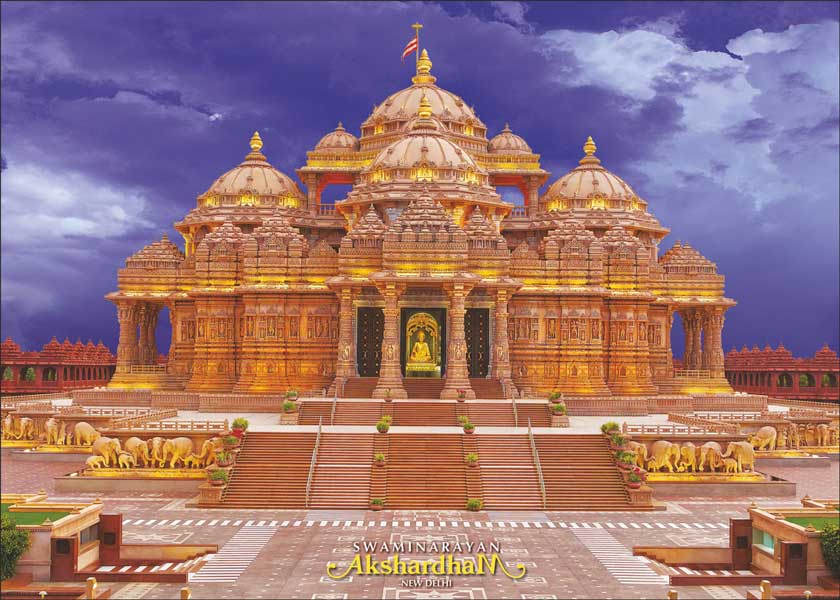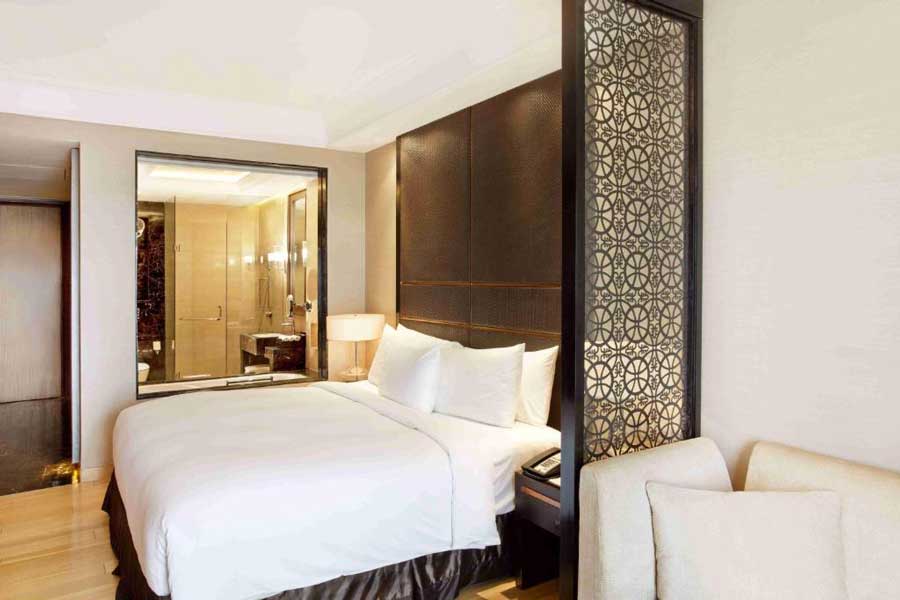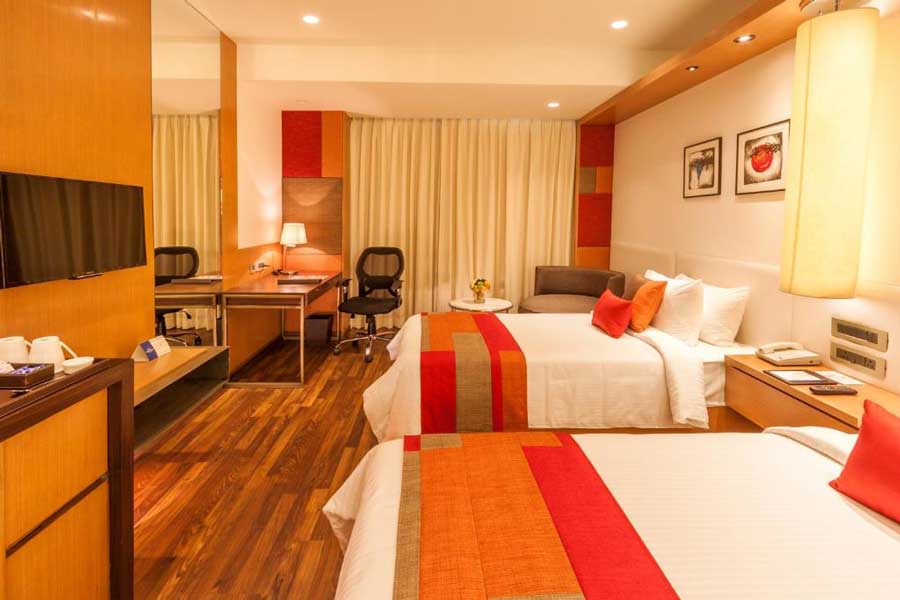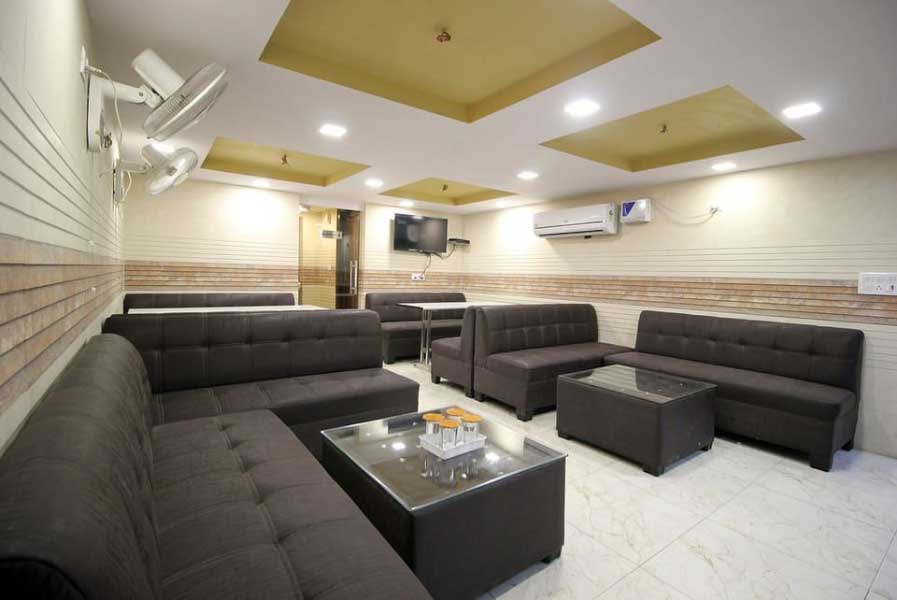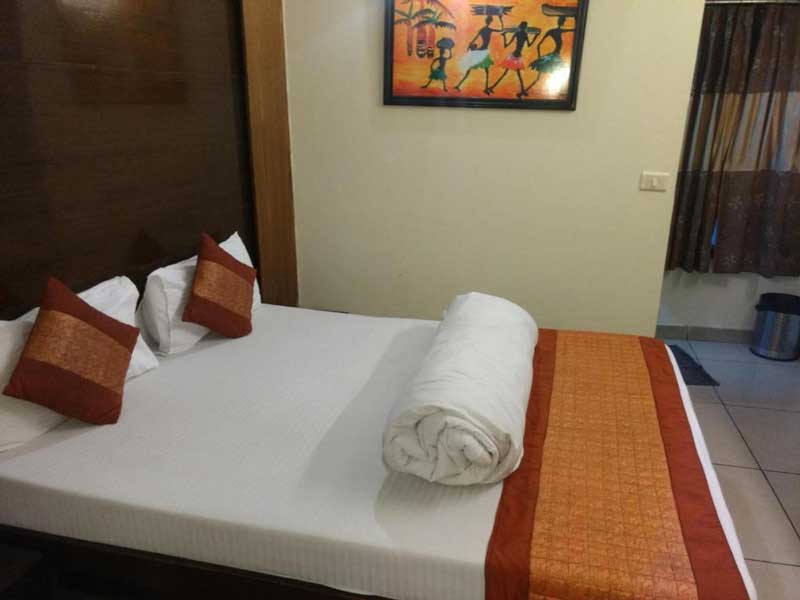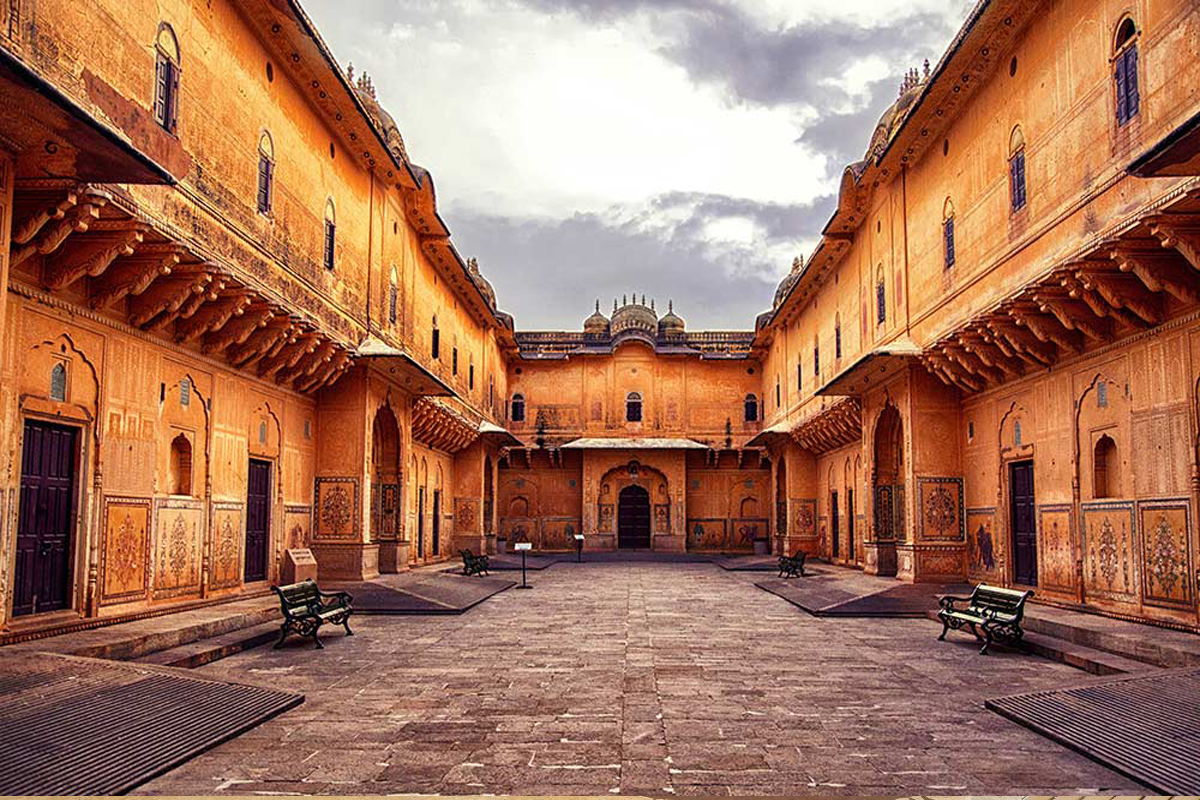Read More on Akshardham Temple
History
Shri Yogiji Maharaj's desire to develop a temple complex in Delhi resulted in the establishment of Swaminarayan Akshardham. When he was the spiritual head of Bochasanwasi Shri Akshar Purushottam Swaminarayan Sanstha, also known as BAPS, he had this notion in 1968. After Bhagwan Swaminarayan, it was his successor, Pramukh Swami Maharaj, who began the temple's construction.
The Delhi Development Authority provided 60 acres of land and the Uttar Pradesh Government provided 30 acres for the construction of this temple. The project began in 2000 and was completed in less than five years. The Akshardham Temple Location in New Delhi is on the banks of the Yamuna River, was first opened to the public on November 6, 2005. In the presence of famous persons such as Dr. A.P.J. Abdul Kalam, L.K. Advani, B.L. Joshi, and Dr. Manmohan Singh, the then Prime Minister of India, the temple were inaugurated by Pramukh Swami Maharaj.
Architecture
BAPS built the temple, which was inaugurated on November 6, 2005. (Bochasanwasi Shri Akshar Purushottam Swaminarayan Sanstha). The Akshardham Mandir, the complex's major attraction, rises to 141 feet in height, reaches 316 feet in width, and measures 356 feet in length. The carved representations of many deities, musicians, dances, flora, and animals on the walls and roofs are a work of outstanding architecture. Every detail here extols the importance of Indian culture.
The Swaminarayan Akshardham Mandir was constructed employing a blend of traditional Indian architectural styles. Maharishi Vastu Architecture principles are scrupulously followed in the construction of this structure. To maximize the longevity of this outstanding architectural item, the builders of this gorgeous temple followed the Shilpa Shastras and did not utilize steel or concrete.
Activities
1- Sahajanand Darshan - The Hall of Values
Visitors depart The Hall of Principles with a thorough understanding of values such as perseverance, nonviolence, family harmony, prayers, and morality, as the name implies. The ageless messages of Hindu culture are portrayed utilizing audio-animatronic figures, immersive projections, and 3-D dioramas, among other approaches. In addition, the hall houses the world's tiniest animatronic robot, Ghanshyam Maharaj, Swaminarayan's child form. The show's languages would be in Hindi and English separately.
2- Musical Fountain - The Water Show
Sahaj Anand Water Show is an experience in and of itself, reflecting the story of one of the Vedic era's riches of knowledge, Kena Upanishad. With 2,870 steps and 108 shrines, the Kund is India's largest step well. A 27-foot-tall statue of Neelkanth Varni, representing the ideals of determination, courage, and commitment, stands in the center. The pool's nine lotus design is based on a Hindu yantra.
3- Garden of India - The Bharat Upavan
The sculptures of famous figures from Indian culture and history are surrounded by flora. Statues of liberation fighters, children, women, and other national figures are among them.
4- See Exhibitions
These performances bring together art, spirituality, culture, and science in a harmonic way. They bring a perfect mix of ancient values and modern techniques to the table to deliver an experience of Universal ideals and Hindu history. The three displays are displayed in three separate halls.
Tips for visiting
- Mobile phones, cameras, headphones, and other similar items are not permitted. There is a cloakroom where the items can be stored, but the process takes 30 minutes to an hour because it entails filling out a form and taking a picture of the item.
- Make sure to learn about Akshardham Temple Timing and Akshardham Temple location before making a move there.
- On Sundays, resist visiting the temple to avoid the crowds.
- The majority of archaeological sites are closed on Monday. As a result, avoid visiting Akshardham on a Monday.
- Don't bring outside food as it is not permitted.
- Cover your shoulder, neck, navel, and legs with clothing.
- You should not bring any bags with you. After many stages of security screenings, only petite ladies' purses are permitted.
- Bring a pen to fill out the cloakroom registration form.
- In the evening, don't miss the fountain display.
Best time to visit
The greatest time to visit Delhi would be between July and October. You avoid the sweltering heat and shivering cold of Delhi in this manner; a perfect balance of heat and chill.
Nearby Atractions
- Sanjay Park (4 km)
- Millennium Park (6.7 km)
- Red Fort (7.2 km)
- India Gate (7.9 km)
- Shri Balaji Mandir (10.3 km)
Nearby market/ shopping places
1- The Sale Hut
It is a men's clothing store in Delhi and is just a 3-minute drive from the temple. This establishment is located in Radhika Market, Radhika Market, Atta Market Sector-27, Noida - 201301. Men's shoes and clothes can be bought from here.
2- Sarojini Nagar Market
Although the market is 13 km away from the temple, it is a must-visit. Every kind of street shopping can be found here at a very reasonable price.
3- Janpath Market
Gujarati and Tibetan Markets are the two main streets that makeup Janpath Market on its whole. The main attractions here are Kashmiri products such as woolen scarves, Pashmina shawls, suit sets, hand-woven Kurtis, brass artifacts, Chinese lanterns, wooden stationery items, mojris, and so on.
4- Khan Market
Although there are street-side retail products at Khan Market, the selection is limited. If you're seeking elaborately created handicrafts, traditional souvenirs, or artisan trash jewelry, the market has a variety of shops to choose from.
Nearby Hotels
- Smg Heritage Nehru Enclave
- Retreat Inn
- Hotel Palazzo
- Mannat inn hotel
- Solitaire Hotel
- Beacon Hotel
- Hotel Sunshine
Interesting Facts About Akshardham Temple
- The facility was built with more than 300,000,000 volunteer hours.
- It was built by over 8,000 volunteers from all across the world.
- Mandir made of sandstone and marble with beautiful carvings
- Exhibitions on Hinduism, featuring the life and teachings of Bhagwan Swaminarayan, including prayer, compassion, and nonviolence.
- In this temple complex, there are ten welcome gates.
- To maximize the temple's longevity, no concrete or steel was utilized in its construction.
- The Yagnapurush Kund, located within the temple, is the world's largest of its sort.
- This temple was created by about 11,000 craftspeople.
- The food court inside the temple, Premvati Ahargruh, is themed after the Ajanta and Ellora caves in Maharashtra.


